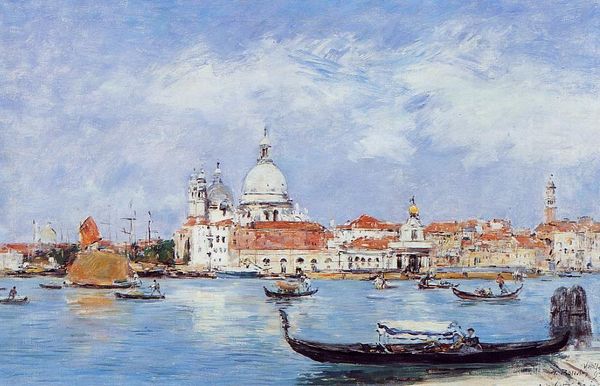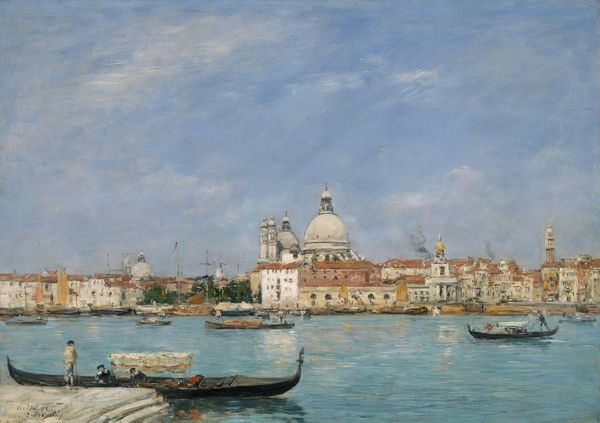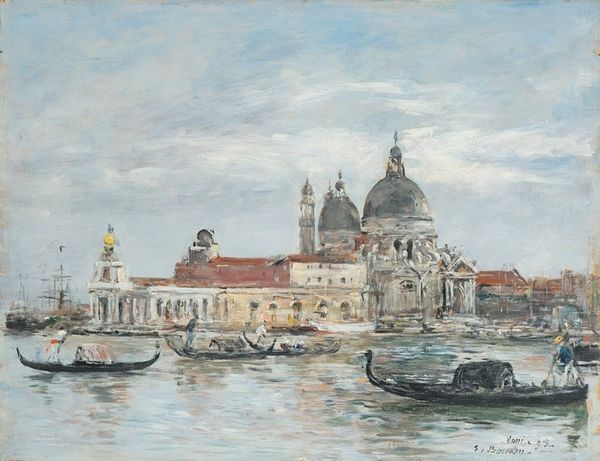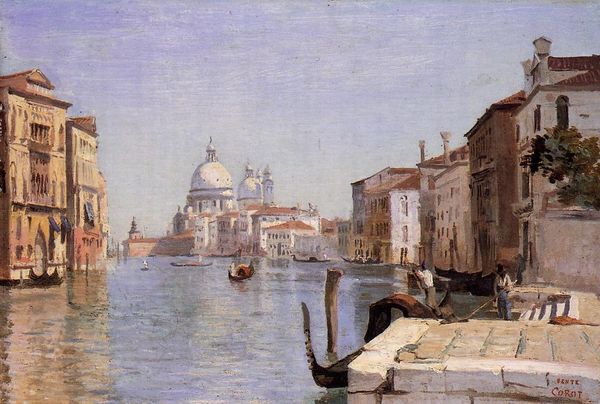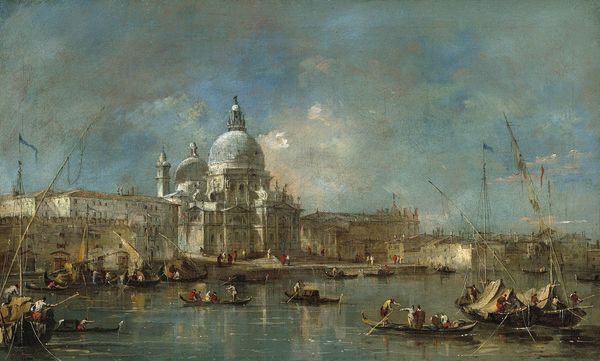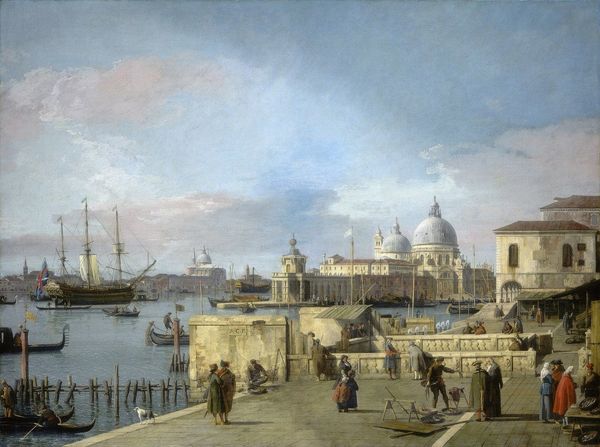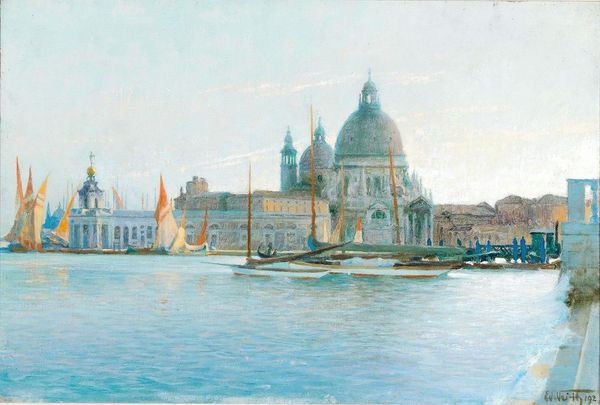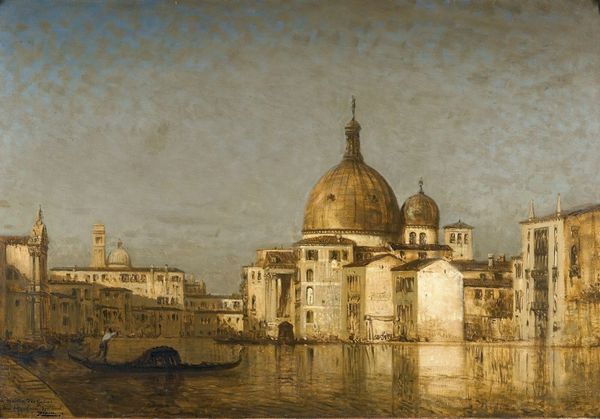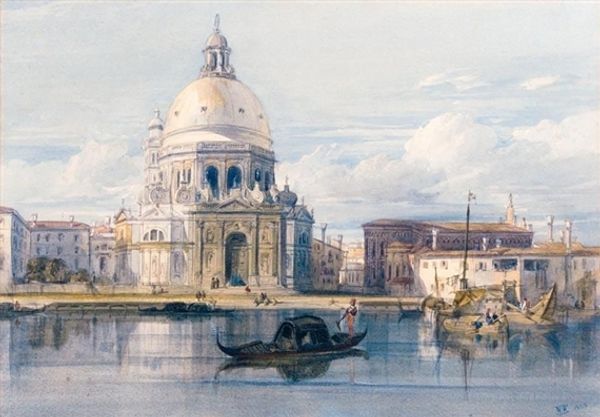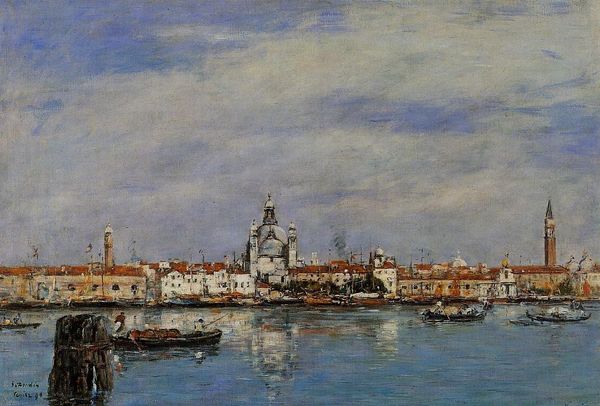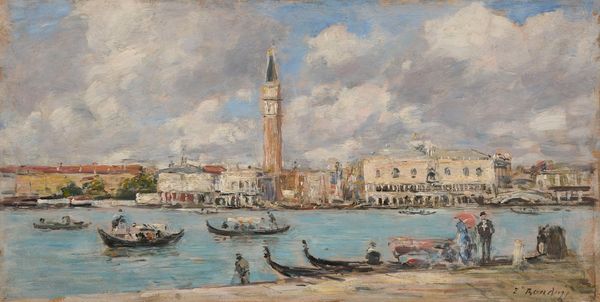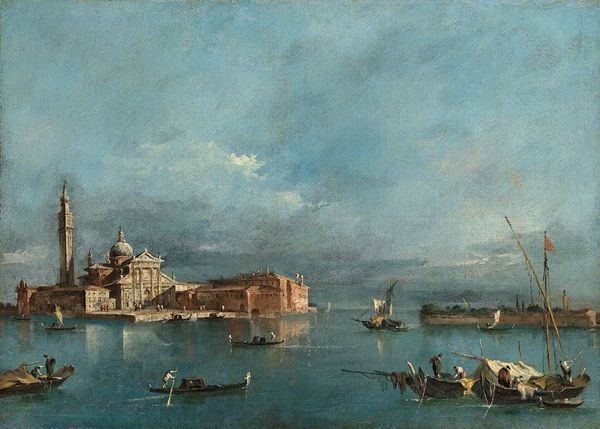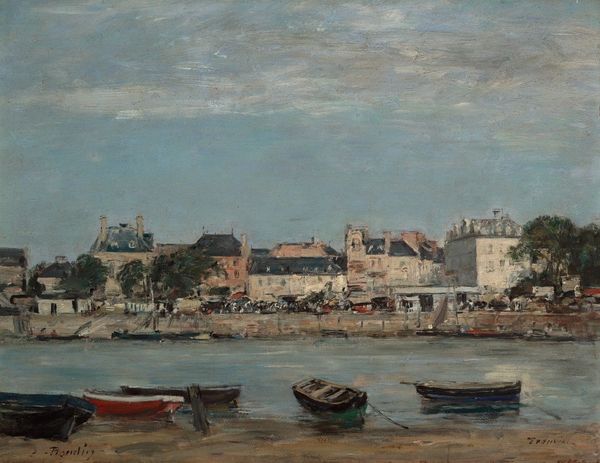
Copyright: Public Domain: Artvee
Eugène Boudin captured Venice, with oil on wood, portraying the Dogana and Santa Maria della Salute, iconic symbols of the city. Painted in the latter half of the 19th century, this work reflects the rising popularity of Venice as a tourist destination, particularly for the European upper classes. Boudin, known for his plein air seascapes, presents Venice as a vibrant, bustling port city, a stark contrast to its historical role as a powerful, independent republic, which ended with Napoleon’s conquest in 1797. The painting's focus on the customs house, or Dogana, also hints at Venice’s continued importance as a center for international trade. The Basilica di Santa Maria della Salute, initially constructed to celebrate the end of the plague, looms large as a reminder of the powerful role the Catholic Church played in Venetian society. Examining such artwork demands scrutiny of historical records, tourist guides, and travelogues, which reveal how Venice was perceived and marketed during this period. This helps us to grasp the social and institutional contexts that shaped both the production and reception of images like Boudin's.
Comments
No comments
Be the first to comment and join the conversation on the ultimate creative platform.
